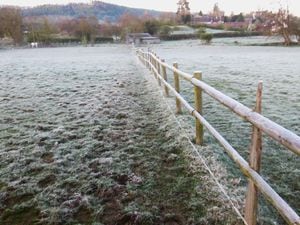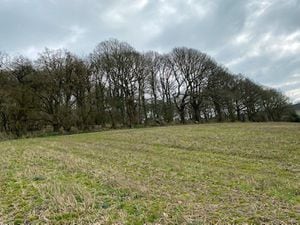How landmark Shropshire cottage stood high on Long Mynd for 100 years
For those wanting to live the Shropshire high life it was a perfect home – Pole Cottage.
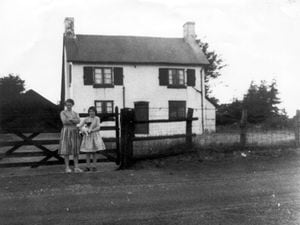
Standing close to Pole Bank, which at a smidgeon under 1,700ft is the highest point on the Long Mynd, the cottage was for over 100 years a local landmark, before demolition just over 50 years ago.
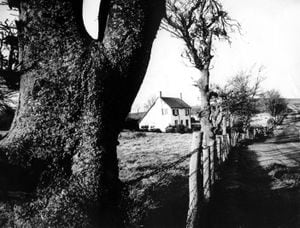
The Shropshire Hills AONB Partnership has been seeking memories from people who can recall the days when the cottage was still standing.
Digging into our files we can shed some light on the cottage, which stood close to a wooden pole which itself disappeared in the early 1930s.
The cottage's final days were sad ones of vandalism and dereliction. Finally, early on the morning of Good Friday, April 1970, work began to knock it down.
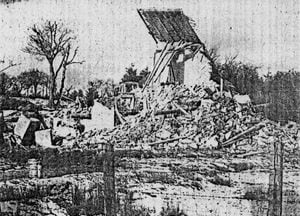
Speaking in 2003, 84-year-old Mr Henry Owen of Church Stretton recalled that the last regular occupant was Ronald Stevens, of Walcot Hall.
“He kept falcons and used them for catching grouse. He did not live there permanently, but came there in the spring, and went back to Walcot Hall in the autumn.
“I have been inside many times, as I knew Ronald Stevens well. It was very tidy,” Mr Owen told us.
The water came from a spring on the hill, and the lighting was from oil lamps.
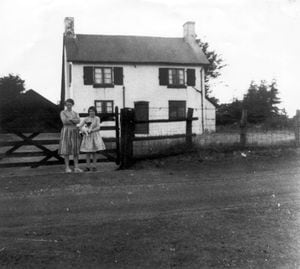
Although he did not know when Mr Stevens finally left, a newspaper report at the time of the demolition implies that it was in the early 1950s.
“It was vandalised badly. As fast as the National Trust repaired it, it got knocked about again."
There was some use of the cottage after Mr Stevens' departure. For a while John Anstey, a member of the nearby Midland Gliding Club, rented it from the National Trust – this must have been after 1965, when the Trust bought most of the Long Mynd. And club president, the late Keith Mansell, remembered stopping there for several nights one Bank Holiday.
Later, the Trust asked the gliding club if it was interested in using the cottage for accommodation, but it declined as it felt it was too far away to keep a proper eye on.
It saw some use as a shooting lodge in the last period of its life before the National Trust took the decision to demolish.
As to the origins of the cottage, according to the Discovering Shropshire's History website there was a settlement there since at least 1828 when it was known as John Matthew's cottage. It was referred to as a shepherd's lodge on an estate map of 1831, and only later became known as Pole Cottage, after the pole erected by the Ordnance Survey in the 1860s to mark the highest summit of the plateau.
However a 1935 newspaper report which mentioned Pole Cottage in passing gave somewhat different information about its origins, quoting a 76-year-old, George Edwards, as remembering that a Mr Scott built the cottage for an old lady to live in.
And back in 2003 one Star reader, Clifford Smout of Upper Hayton, raised the possibility that the cottage actually replaced an earlier cottage and had a most unexpected astronomical role, which hints at a potential alternative derivation of the Pole Cottage name.
"Many of the landed gentry had Pole Cottages built on the highest ground of their estates during the 17th and 18th centuries," he told us.
"As budding astronomers or astrologers began to understand more about these subjects, they began to build, or had built, cottages on their family estates.
“These cottages were built directly in line with the Pole Star and what was thought to be the centre of the Earth.
"They got great pleasure, so it is written, from measuring the angles at each summer solstice to see how far their cottage had moved off centre. Sometimes this would be found to be as much as eight metres.
"What they did not understand was that this distance was due to the pull of the magnetic field, being the variation between true grid north and magnetic north, which differs yearly."
As it happens the site of Pole Cottage, remote and away from light pollution, is an excellent place for stargazing today.
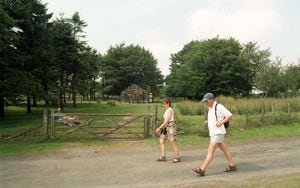
As for the nearby wooden pole on Pole Bank, that's quite a story too. An interview with Long Mynd landowner Max Wenner in the Shrewsbury Chronicle of June 4, 1935, referred to it being “mysteriously removed a short time ago."
Mr Wenner, who went on to die an unusual death when he fell, jumped, or was pushed from an airliner, denied being involved in the pole's removal, although he said he was pleased it was gone.
The pole must in any event have been a recent replacement for an earlier one as it is recorded that on September 6, 1927, a 40ft pole was erected on the summit of the Long Mynd, made out of a growing tree and given by a Mrs Gibbon. According to the Shrewsbury Chronicle it was to replace one “taken down six years ago."
The erection of the 1927 pole was organised by one Dr E S Cobbold, who was a civil engineer, using men from All Stretton and with a Mr Douglas – believed to be Tom Douglas, a local farmer and timber contractor – in charge of them.
They obviously knew each other well because Tom lived at Buckstone Farm House in All Stretton, practically across the road from Dr Cobbold’s place, Watling House.


